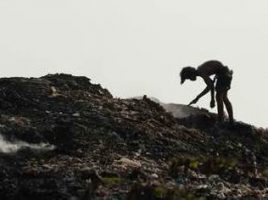Greening the Brick Sector in India: Bihar Leading the Way
 Before the pandemic situation, the Indian construction industry was booming with an annual growth rate of 9%, while contributing to 8% of the GDP. Despite being unorganised, the Indian brick sector creates employment for around 8 million people each season producing over 170 million bricks in 150,000 units and uses around 350 million tonnes of fertile top soil and 24 million tonnes of coal, emitting 42 million tonnes CO2 in the process.
Before the pandemic situation, the Indian construction industry was booming with an annual growth rate of 9%, while contributing to 8% of the GDP. Despite being unorganised, the Indian brick sector creates employment for around 8 million people each season producing over 170 million bricks in 150,000 units and uses around 350 million tonnes of fertile top soil and 24 million tonnes of coal, emitting 42 million tonnes CO2 in the process.The silver lining to the dark cloud is that the brick sector carries a huge potential for transformation through adoption of clean production systems for emission reduction and improving energy and resource efficiency by means of industrial waste utilisation and process modifications. In this aspect, the initiatives taken by Development Alternatives in association with Bihar State Pollution Control Board and supported by Shakti Sustainable Energy Foundation have helped accelerate cleaner brick production technologies and support the Government of Bihar’s aim in becoming a carbon neutral state by the year 2040.
The brick industry in Bihar is a mainstay of the construction sector. At present, the industry is based on decentralised brick production technologies that are highly energy and resource intensive leading to huge air pollution. Bihar has 5,823 registered operational burnt clay brick kilns, producing approximately 17.5 billion fired clay bricks annually. The production of fired clay bricks consumes around 4.8 million tonnes of coal per year, leading to removal of 53 million tonnes of topsoil and emission of 16 million tonnes of carbon dioxide. The increasing emissions of Sulphur dioxide (SO2), Nitrogen oxides, Suspended Particulate Matter (SPM), CO2 and other greenhouse gases from the brick production process is worrisome. The high dependence on topsoil threatens agricultural activity, which is the backbone of Bihar’s economy contributing nearly 24.8% to the state GDP and employing around 80% of the state’s workforce. The magnitude of these impacts is expected to increase considering the expected growth of construction sector in the state. Thus, there is a need to strike a balance between environment and public health and jobs created, without affecting the revenue of the state.
‘Greening of the Brick Sector in Bihar’ initiative started in 2013 with an aim to introduce and disseminate brick production technologies which are not only carbon neutral but also resource efficient. Fly ash being produced from thermal power plants has been the most easily available and suitable resource for making good quality eco-friendly bricks. Initiatives were taken to bridge the supply-demand gap. The supply was achieved by promoting new enterprises, working with NTPC in making fly ash available, extensive training programmes to support entrepreneurs in making quality bricks and introducing the fly ash brick quality rating system. On the demand side, initiatives have been taken up to promote and use fly ash bricks in public construction by conducive policies and regulations.
The above initiatives have resulted in a growth of fly ash enterprises from 3 to more than 250 within a span of 5 years. The target is to create 2000 enterprises as per the target of the state government of Bihar. The road to achieve the goal is not smooth with roadblocks from various stakeholders. However, we are certain that this will be achieved since there has been a momentum created within entrepreneurs who even under the Covid scenario are operating their businesses and new people are increasingly coming forward to set up fly ash brick making units.
Dr. Soumen Maity
smaity@devalt.org
The views expressed in the article are those of the author’s and not necessarily those of Development Alternatives.
This blog first appeared as an editorial in Development Alternatives Newsletter October, 2020




Leave a Reply